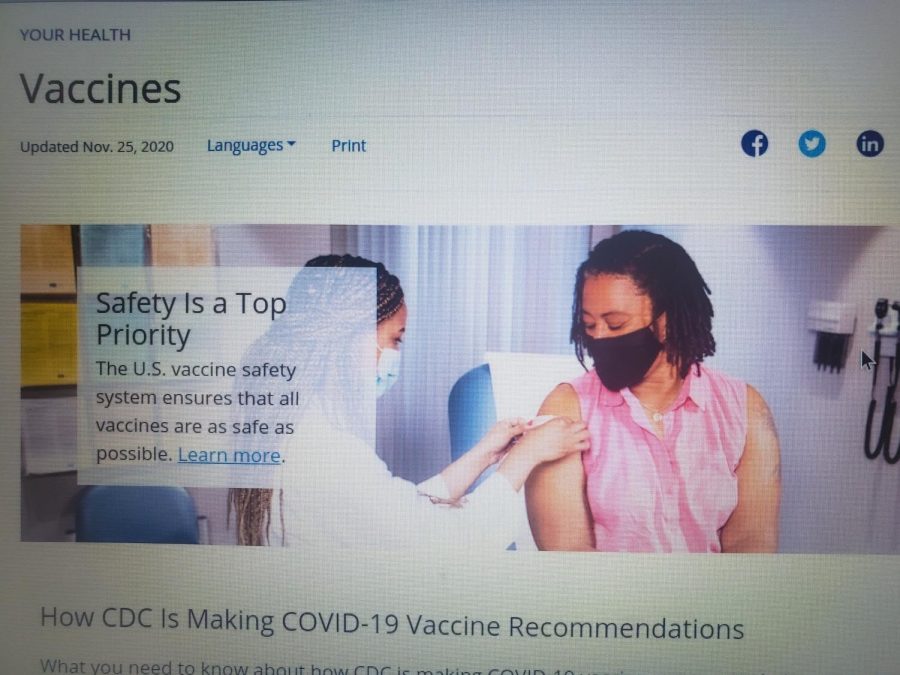A Beginners Guide to the COVID-19 Vaccine
The United Kingdom government has approved a vaccine for their citizens following the Covid-19 pandemic. Many countries are following suit and there is talk of America joining that list.
December 17, 2020
During these glum times of the COVID- 19 pandemic, a vaccine to counter the dreadful virus is most sought after globally. Most countries had commenced vaccine manufacturing as early as March. Currently, there are over 200 different COVID-19 vaccines under development around the world, and now everyone is hoping for the pandemic to simmer down.
Russia was the first country to begin the production of the COVID-19 vaccine. The Russian Sputnik V vaccine was approved by Vladimir Putin in August. The vaccine is named after the satellite from the space race. In the past, Russia became victorious by creating the world’s first satellite and now gained triumph by registering the first COVID-19 vaccine worldwide.
However, Sputnik V has led to uncertainty throughout much of the world, predominantly Europe and North America. Although the vaccine is 95 percent effective, it is developed through a vector. Vector is a strand of coronavirus that lacks some genes and is unable to transport genetic material. This means there is a small but significant risk that the vector can cause the COVID-19 virus to enter and infect the body. The vaccine is also facing criticism from scientists worldwide as it was approved within less than two months of human testing.
Furthermore in Europe, the European Commission President Ursula von der Leyen says the first coronavirus vaccinations could start by Christmas (ABC News). The PFIZER vaccine was approved by Britain on Dec. 2. It is 95 percent effective against the virus that upended the world. The EU has agreements with six potential vaccine suppliers and is working on a seventh contract. The deals allow it to purchase over 1.2 billion doses.
Prime Minister Boris Johnson said, “The vaccine will begin to be made available across the UK from next week. It’s the protection of vaccines that will ultimately allow us to reclaim our lives and get the economy moving again.”
Meanwhile, Moderna Vaccine is protecting 94.5 percent of people. In the US, Moderna will be available with 20 million doses in the upcoming weeks. The company seeks to have one billion doses available for the world next year and is planning to seek approval in other countries too. The UK also announced on the 16th of Nov. that it will have five million doses of the Moderna vaccine, enough to vaccinate 2.5 million people.
In India, the Bharat Biotech Vaccine has started its third phase trials. The anticipated vaccine against the contagion is expected to be launched for the Indian population by June 2021. Another vaccine, ChAdOx1 nCoV-19 by AstraZeneca Plc and Oxford university is referred to as “India’s Big Hope.” This vaccine uses a different approach than Pfizer and Moderna as it administers multiple shots. The Astra-Oxford vaccine on average prevented 70 percent of cases in trails in the UK and Brazil. However, they only yielded efficiencies of 90 percent and 62 percent in respective locations. Pfizer and Moderna are thus more effective than these.
Now the primary question is who will be recipients of these vaccines? It is highly likely that Health care workers and nursing home residents will be the first people to receive the vaccine, as the panel of experts from the Centers for Disease Control and Prevention (CDC) voted. By March, people with medical conditions with a high risk of death if infected and essential workers, working in education, food, transportation, and law enforcement will receive vaccinations. The general population will then get vaccinated by spring.
Everyone is now assured that the vaccines will be able to combat the COVID- 19 virus and bring the world to stability once again.
























